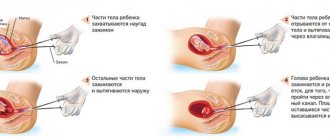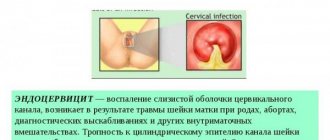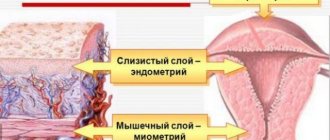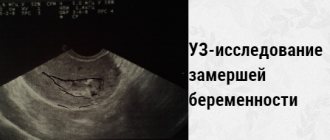A frozen pregnancy often requires forced curettage and full treatment. The remains of a fertilized egg are not always released in full. When and after what actions can you plan a new pregnancy after a frozen one? Does curettage affect reproductive health?
Conception after cleansing
Simple curettage does not affect reproduction. In addition, a woman can become pregnant within a month after cleansing. However, during curettage, the upper layer of the endometrium is removed, which injures the uterine cavity. Therefore, pregnancy immediately after cleansing is associated with serious pregnancy problems.
To avoid possible complications, it is necessary to consult a gynecologist, who will suggest an acceptable time frame, taking into account the woman’s condition and the reasons for the cleaning.
Physiological state of a woman after cleansing
There is a theory that nature predicts that every tenth pregnancy will be miscarried for one reason or another. As demographic indicators grow, cases of fetal death and abnormal course of the process also increase. Whether you agree with such a theory or not is an individual matter, one thing is obvious: a frozen pregnancy is a huge stress for a family that sincerely wanted to give birth to a healthy baby.
Miscarriage is 20% more common in economically developed countries than in other countries.
The death of a fetus is stressful not only for a woman, but also for her body. The physiological state of the patient depends on the professionalism of the doctors who performed the operation. However, the subsequent treatment of the woman and her emotional recovery are no less important.
Indications
Gynecological cleansing can be carried out for diagnostic purposes, when it is necessary to obtain tissue for histological examination, or for therapeutic purposes, when a pathological formation is removed.
Curettage is a surgical method for treating a variety of pathologies, including:
- uterine bleeding of various nature;
- endometritis - inflammation of the uterus, adenomyosis;
- frozen pregnancy, ectopic pregnancy in the cervix, remnants of membranes, placenta (placental polyp);
- adhesions in the body of the uterus that prevent pregnancy.
Preparation
Most often, cleaning is carried out before menstruation - at this time the cervix is susceptible to dilation.
Before the operation, the necessary tests will be taken;
- coagulogram;
- general analysis of urine and blood;
- tests for HIV, hepatitis, syphilis;
- vaginal smear.
A few days before cleaning, stop douching, using vaginal medications, and refuse sexual intercourse.
Treatment
Each case of a desired pregnancy that ended in miscarriage is considered individually. There is no need to talk about a general treatment regimen that suits absolutely all women. And there are reasons for this.
- There can be several reasons for freezing: from genetics to infection, and they are all treated differently.
- The period at which development ceased plays a huge role. Most fading is diagnosed at an early stage, but it is not uncommon for the fetus to die later (starting from the 16th week).
- If, after histology of the fetus, genetic mutations were identified that led to developmental arrest, then there is no treatment for the woman, as such.
- The psycho-emotional state of a woman determines the threshold of acceptable medications.
The recovery period, the amount and type of drugs used, the terms of rehabilitation - these are all indicators of an individual nature.
Metipred
Hormones for the development and maintenance of pregnancy - progesterone, prolactin, which, if deficient, are compensated for by medication.
If there is a hormonal problem of miscarriage, i.e. If a woman has an increased amount of testosterone, Metypred is prescribed for treatment.
Prescription of Metipred is possible only based on the results of hormone tests.
The drug stabilizes hormonal levels, especially if the problem is due to adrenal dysfunction. Additionally, body weight control is indicated, and, if necessary, weight loss. Taking the drug imposes restrictions on the consumption of fatty protein foods (meat), as well as a ban on alcohol and cigarettes.
Terzhinan
Terzhinan copes well with inflammation of the vagina or mucous membrane of the birth canal. It is used in combination with antibacterial therapy, as well as while taking anti-inflammatory drugs, intravenously or orally (by mouth).
Tablets of the drug are inserted into the vagina and are effective against fungi and pathogenic microflora. They are used for prophylaxis before childbirth and for complex therapy after pregnancy has ended.
Terzhinan contains nystatin and neomycin, which cope with inflammatory processes and stop foci of infection.
What is cleaning and how does it work?
Medical cleansing is carried out in order to remove the dead embryo from the uterus. If this is not done, the decomposition of the tissues of the dead fetus will cause a local inflammatory reaction and also provoke general intoxication of the body. Depending on the period at which developmental arrest occurred, doctors can choose one of the removal methods.
Medicinal cleaning
In this case, special drugs are used that provoke a miscarriage. This treatment is the least traumatic for the reproductive system, but this method can only be used for up to 5 weeks.
Vacuum aspiration
Using a special instrument, the cervix is opened slightly, an extractor is inserted into the organ and its contents are sucked out. The operation is performed under local or general anesthesia. The uterine epithelium is minimally damaged during the procedure, and bleeding after such an intervention does not last long (1-3 days). Vacuum aspiration is done for freezing for up to 8 weeks.
Scraping
Therapeutic curettage is performed under local or general anesthesia (the type of anesthesia is determined by the doctor after clinical and laboratory tests in preparation for the operation). The uterine endometrium is cleaned using special instruments.
Recovery
The fading of pregnancy is a kind of failure in the functioning of either the mother’s body or in the development of the fetus itself. In any case, all measures must be taken to restore the woman’s reproductive system. Your doctor will tell you how to recover and heal.
Recovery of the body, during the normal course of the postoperative period, takes at least two months.
Correct action
The goal of restoration is the normal functioning of the woman’s reproductive function, as well as a healthy pregnancy in the future. The outcome of subsequent conceptions depends on how correct the restoration measures were.
Fading or abnormal development of pregnancy may recur if fertilization of the egg occurs earlier than 2-3 months after the miscarriage.
For a proper recovery process, a number of actions should be performed:
- curettage of the uterus from the remains of a foreign body;
- administration of drugs and medications that help stop the inflammatory process;
- restoration of normal microflora;
- emotional support;
- taking vitamins to maintain women's health.
Contraindications for surgery
There are contraindications for curettage, which can lead to serious complications. These include:
- Various diseases of the body in the acute stage (diseases of the cardiovascular system, blood and others). To perform the operation, it is necessary to especially carefully prepare the woman for anesthesia.
- Infectious processes of the female genital organs (colpitis, vaginitis, inflammation of the appendages), as there is a risk of spread of the inflammatory process. It is necessary to sanitize the genital tract locally (vaginal suppositories and tablets) and systemically (antimicrobial drugs).
- Acute bacterial and viral infections (pneumonia, influenza and others).
Consequences
If, after cleansing, an inflammatory process begins in the body, then in the absence of timely medical care, life- and health-threatening consequences may develop. In some cases, after curettage of a frozen pregnancy, complete infertility is possible.
Endometritis
Endometritis after curettage is a common occurrence. This is an inflammatory disease that affects the lining of the uterus.
Sometimes women can develop chronic endometritis. This complication can lead to infertility. Therefore, it is very important to identify the disease at an early stage.
The following symptoms should raise suspicion:
- weakness and malaise;
- pain in the pelvic area;
- purulent vaginal discharge;
- temperature rise to subfebrile (37.1 - 38.0°C) and high (up to 40°C) values.
Hematometer
Hematometra develops against the background of poor removal of blood from the body of the uterus after curettage. Simply put, all the clots, accumulating inside, stretch the uterine cavity and provoke severe pain, similar to labor pains. And since blood is a breeding ground for pathogenic microorganisms, the presence of a large accumulation of secretions for a long time leads to the development of an inflammatory process. As a result, the inner layers of the uterus are destroyed.
In 90% of cases, hematometra after curettage of a frozen pregnancy is accompanied by high fever and acute unbearable pain in the abdomen.
Temperature
An increase in temperature in women after curettage is a postoperative complication that is extremely life-threatening.
This phenomenon occurs against the background of the formation of inflammation in the uterus. The outcome of treatment depends on how old this process is. Often, with advanced forms of endometritis or hematometra, removal of the entire uterus is required. If your temperature rises, you should consult a doctor and tell them how long it has lasted.
Blood clots
It is normal for blood clots to pass immediately after cleansing. This way the uterus is cleansed of the remnants of the placenta or fertilized egg. The duration of discharge should not exceed three days. As a rule, all blood clots come out within the first 24 hours. Further, the discharge becomes less abundant. How much blood flows depends on the individual characteristics of each woman.
Histology
Histological analysis today is carried out both according to the doctor’s indications and at the request of the patient. If a woman did not have tumor processes during pregnancy, did not suffer from cancer, and there are no cases of gene mutation in her family, then histology is used as an additional research method. It helps to determine the cause of pregnancy failure.
Oxytocin
Oxytocin is a hormone that is produced in women both during pregnancy and during childbirth. Without this component, the natural birth of a baby is impossible.
Since curettage is a forced measure designed to cleanse the body of fetal mass, to facilitate this process it will be necessary to introduce an additional portion of oxytocin, which increases the contractility of the uterus, thereby reducing the risk of inflammation.
Re-cleaning
If there are blood clots in the body of the uterus that have not come out, and there are also symptoms of hematometra, then a decision is made to repeat curettage. The woman must be given anesthesia, since the inflammatory process increases pain.
Reasons for repeat curettage:
- presence of blood residues in the uterine cavity;
- temperature increase;
- pain on palpation of the abdomen;
- Ultrasound shows tissue remains in the uterine cavity;
- the woman experiences pain that increases;
- copious discharge with a putrid odor, green or dark brown in color.
In a woman more than 14 weeks pregnant, if the placenta is attached to the lower part of the uterus, the risk of developing complications after curettage is 40% higher.
Possible complications
Despite the fact that surgical treatment is carried out in a hospital setting and in compliance with all the rules of asepsis and antisepsis, after removing a frozen embryo from a woman, the following complications may arise:
- Endometritis (acute inflammatory process of damaged uterine mucosa).
- Rupture of the uterine cervix. Such tears take a long time to heal on their own and can fester. To prevent secondary infection, immediate suturing of such traumatic cracks in the neck is necessary.
- Incomplete removal of pieces of the fertilized egg, which begin to be rejected by the woman’s immune system, causing hyperthermia and severe pain. In severe cases, if you do not seek medical help in a timely manner, sepsis may develop.
In order to notice signs of developing complications in time, such moments must be carefully monitored in the first days after surgical treatment.
Body temperature
The presence of even slight hyperthermia, even if there are signs of a cold, should be a reason for additional examination.
Planning a child after surgery
Every woman who wanted and planned a pregnancy is in a state of mental stress after the death of the fetus. However, the first desire is to conceive a child as quickly as possible. Such a reckless desire risks resulting in a repeat miscarriage.
Planning a new pregnancy after fading and cleansing can only be carried out if the body is completely restored. The uterus is ready for this process after the second month (as soon as menstruation begins). However, the body does not have the reserves to endure such an early pregnancy; the period after curettage is too short.
Doctors at the reproductive and perinatal center recommend planning your next pregnancy no earlier than in 6-9 months. Ideally, the break should be one and a half years.
Despite the resentment and pain, every woman who has undergone a cleansing after intrauterine fetal death wants to quickly “forget” in a new pregnancy. However, in order for a new conception to be effective and end in the maternity ward, it is necessary to carry out a lot of measures aimed at restoring the body’s strength.
Preparing for curettage of the uterine cavity
additionally
Before the procedure, general clinical examinations are performed (general blood and urine tests, blood group and Rh factor are determined, an electrocardiogram is taken, a smear from the cervix, urethra and posterior fornix, a test for syphilis, a biochemical blood test).
A woman needs to shave all the hair from her external genitalia and take a shower. The day before curettage, you should avoid eating heavy meals and eating foods that cause increased gas formation in the intestines. The operation is performed on an empty stomach, the last meal should be no later than 6 hours before. Otherwise, if it is necessary to urgently perform curettage during a frozen pregnancy, gastric lavage is performed.
Before curettage in case of a non-developing pregnancy, it is advisable to prepare the cervix, especially in nulliparous women. This is done to gradually expand it and reduce trauma. To prepare the cervix, kelp (algae sticks) is used. They are inserted into the cervical canal, where, under the influence of the secretion, the kelp swells and expands it. They must be administered the day before the procedure.
It is also mandatory to consult and examine an anesthesiologist who will administer anesthesia, and an obstetrician-gynecologist.










